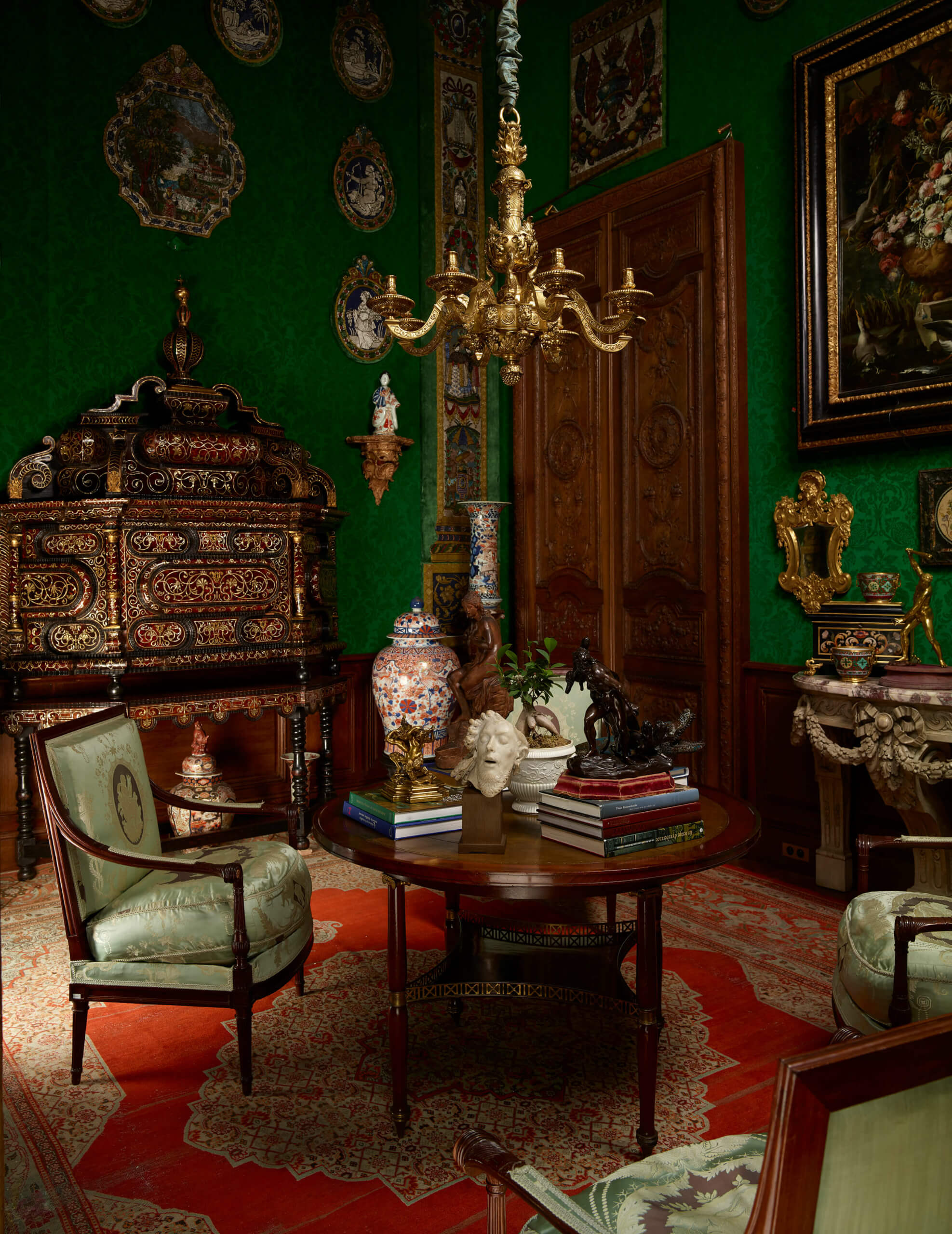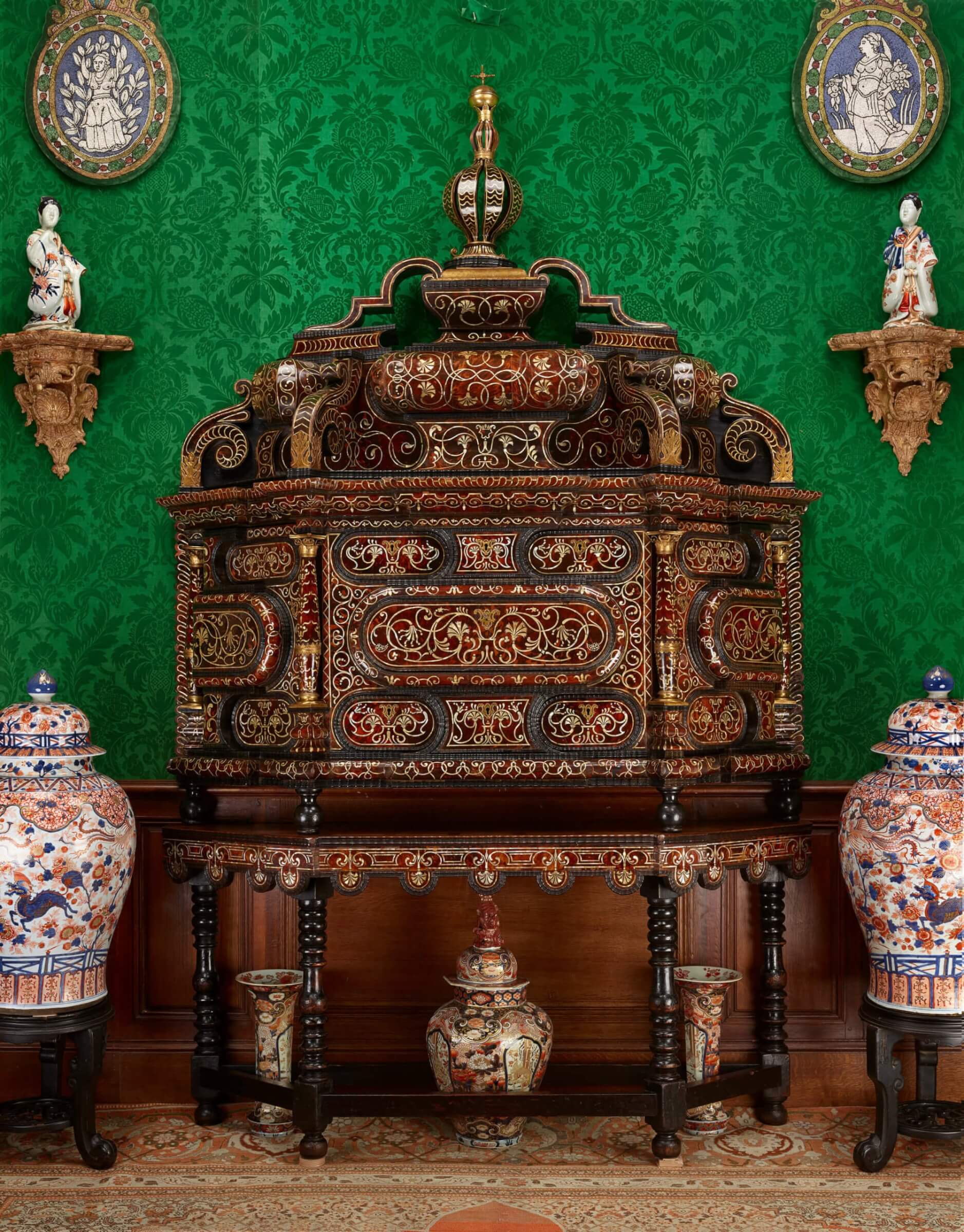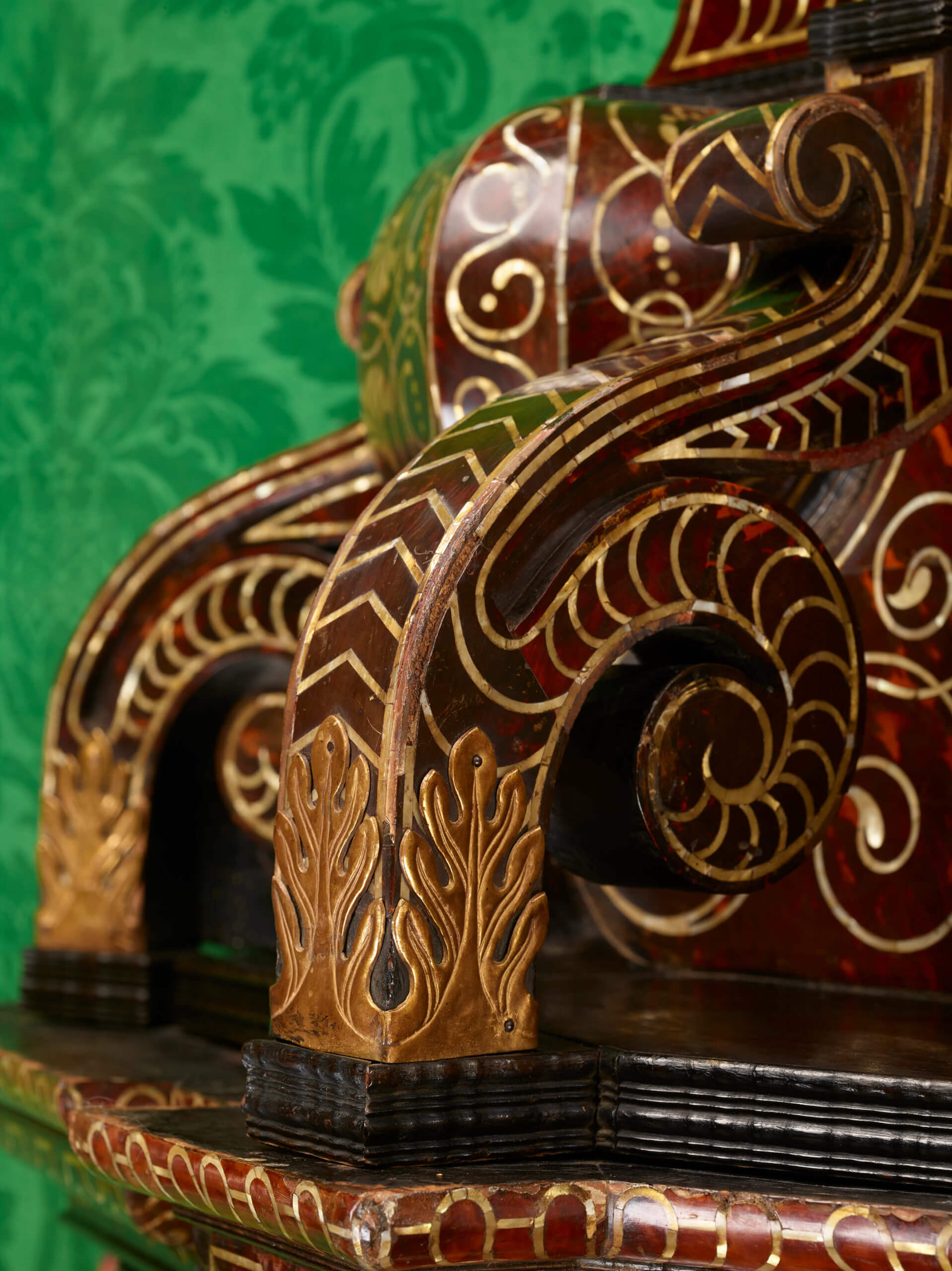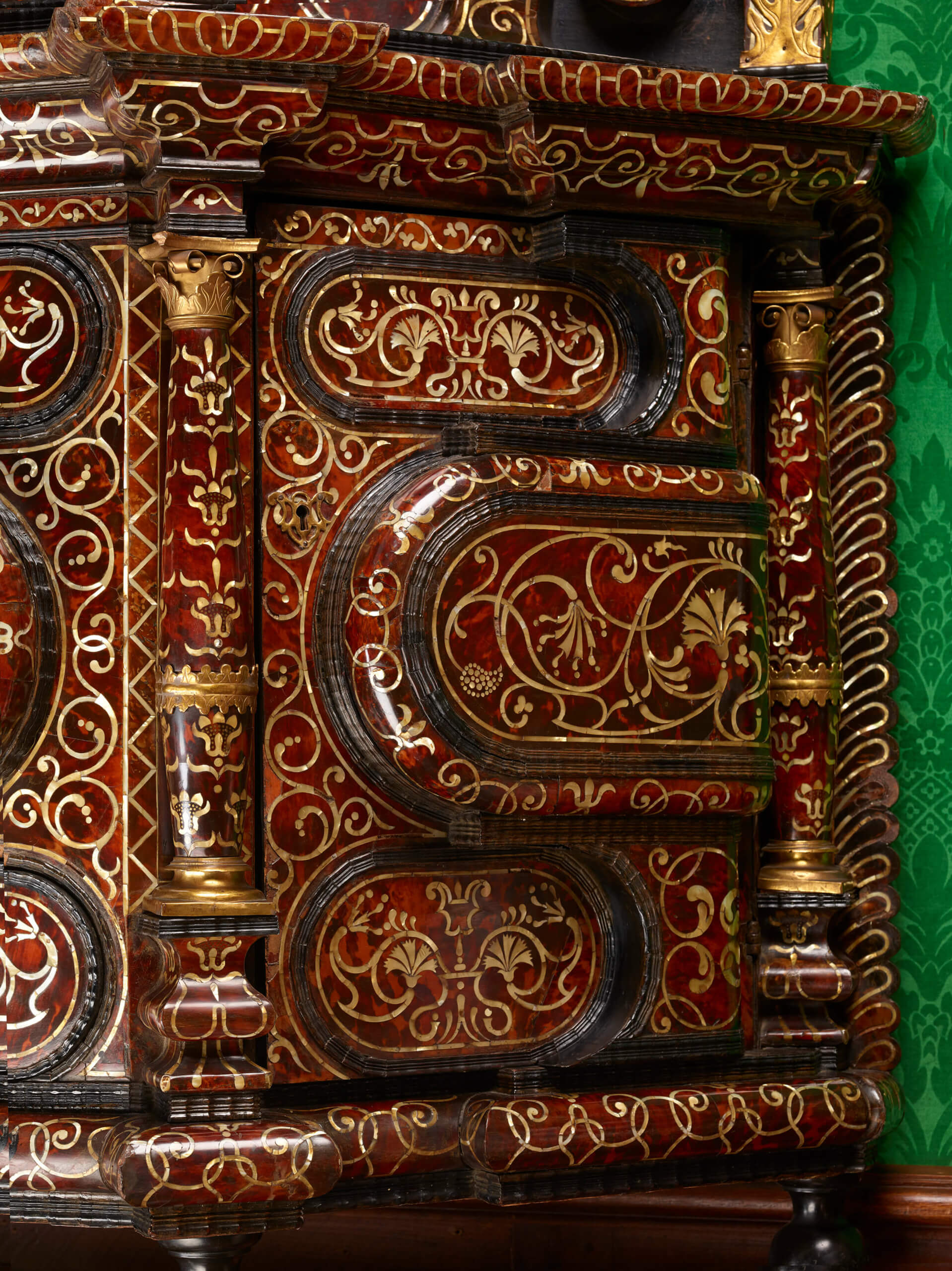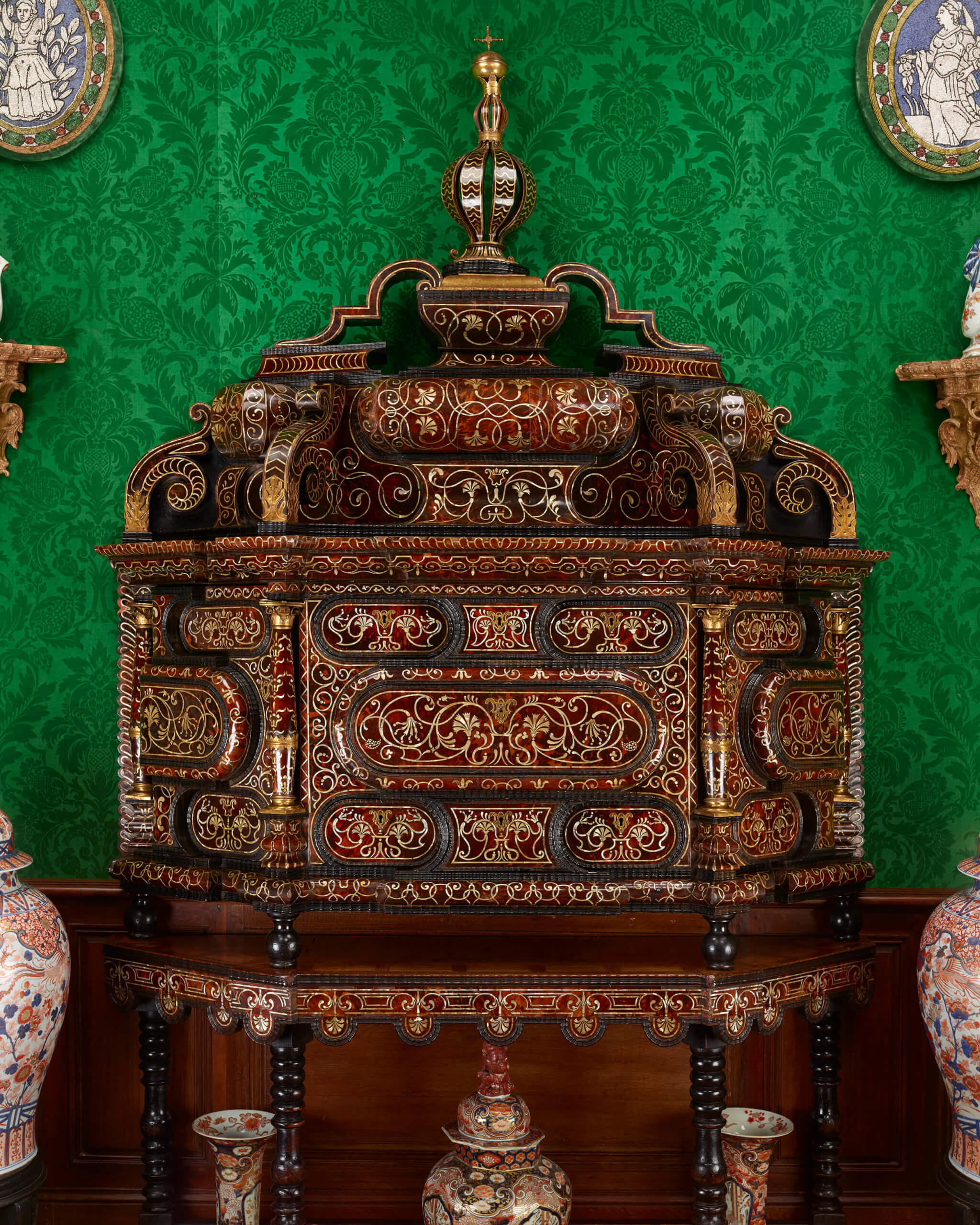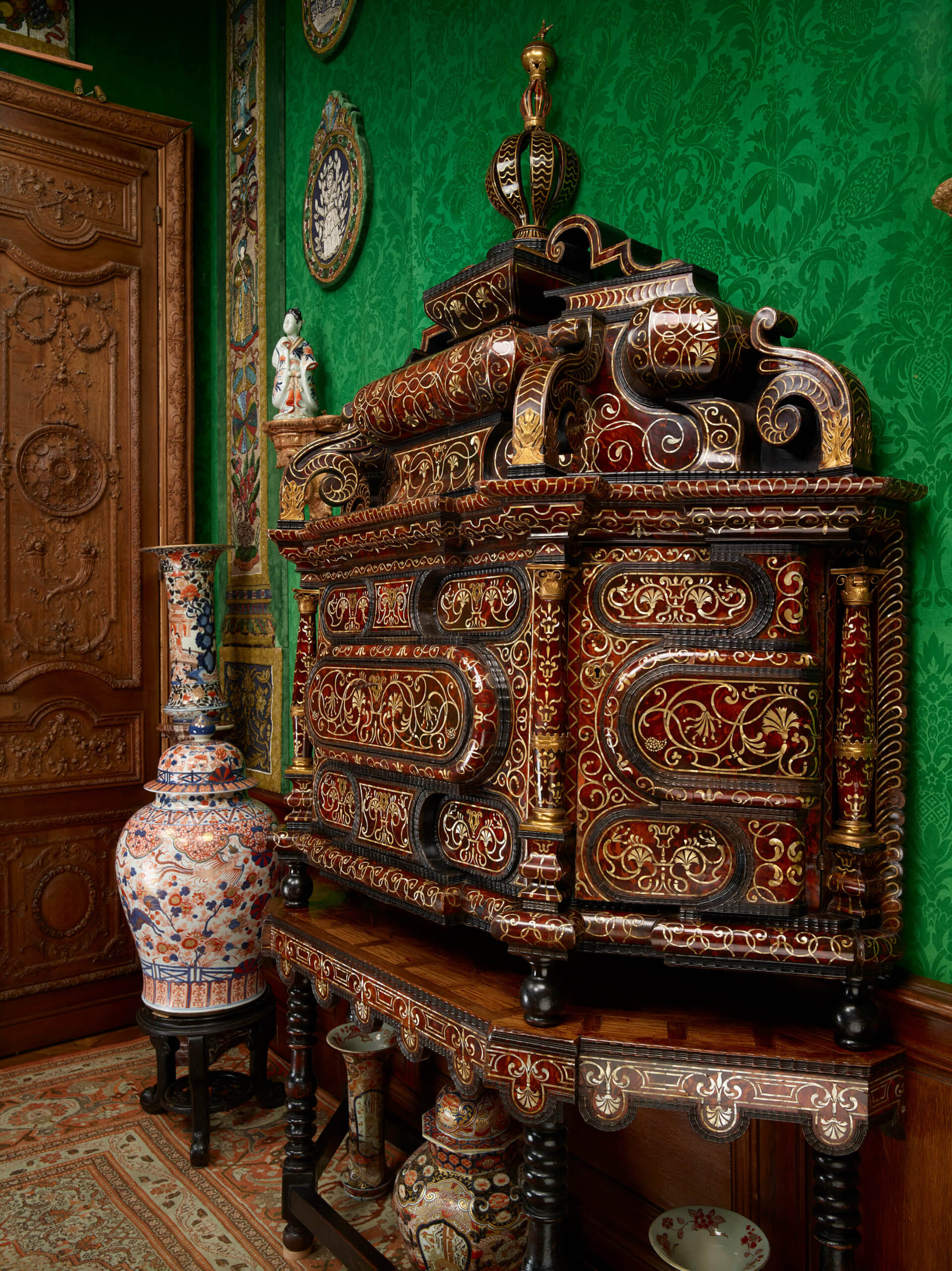

Spanish colonial art, executed at the end of the 17th or early 18th century, very certainly on behalf of a high dignitary of one of the two main administrative districts founded by the crown of castille in its overseas dominions: the viceroyalty of Peru created by Charles Quint in 1542 or the vice-royalty of new spain in mexico established in 1535.
Exotic woods; ebony and blackened wood, inlaid with mother of pearl and red-coloured tortoiseshell; gilt copper.
H. 280 cm. (110 ¼ in.); W. 176 cm. (69 ¼ in.); D. 48 cm. (19 in.).
PROVENANCE: private collection.
COMPARATIVE LITERATURE: María Campos Carlés de Peña, Un legado que pervive en Hispanoamérica, El mobiliario del Virreinato del Perú de los siglos XVII y XVIII, Madrid, 2013, p. 241-287.
This ‘baroque’ ceremonial cabinet, called a gavetero by the Spaniards, is a rare testimony of all the sophistication of Spanish colonial decorative arts during the 17th and 18th centuries, especially in Lima, a city founded on 18th January 1535 by the Conquistador Francisco Pizarro under the name of “la Ciudad de los Reyes” (the City of Kings) and in Mexico, the capital of the Viceroyalty of New Spain. It was most likely executed for a high dignitary established in one of these two main administrative districts created by Spain to govern its immense possessions in Central and South America, and displays a carcass made of indigenous woods—the most commonly used being mahogany, walnut and Nicaraguan cedar—very richly adorned with inlays of mother-of-pearl inlays and red-coloured tortoiseshell inserted into festooned borders of ebony and blackened wood, the whole enhanced by gilt copper ornaments.
